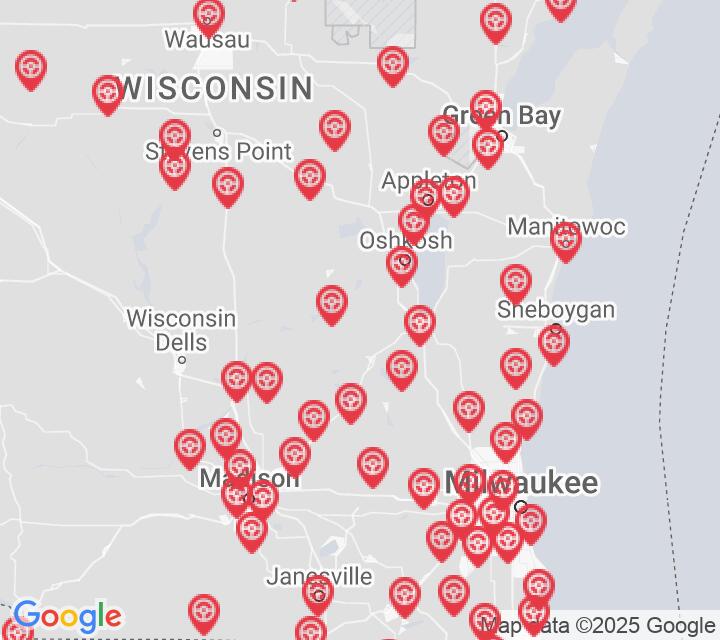2025 Wisconsin Motorcycle Permit Test 10
The following questions are from real DMV written motorcycle permit tests. These are some of the actual permit questions you will face in Wisconsin when getting your motorcycle learners permit. Each motorcycle theory practice test question has three answer choices. Select one answer for each question and select "grade this section." You can find this button at the bottom of the drivers license quiz. For a complete list of questions and answers for Wisconsin please visit https://cheat-sheets.dmv-written-test.com/en/wisconsin/motorcycle.
Number of Tests
Number of Question
Passing Score
16. In a slow, tight turn, the rider should:
Explanation
When taking normal turns, lean at the same angle as your motorcycle. However, in slow, tight turns, you should counterbalance the leaning motorcycle by keeping your body upright.
17. When it starts raining, it is best to:
Explanation
When it starts to rain, avoid riding in the center of the lane. Instead, ride in the tire tracks left by cars ahead of you. The left tire track is often best for riding, but this can vary based on traffic and other conditions.
18. When changing lanes:
Explanation
Like any vehicle, motorcycles have blind spots. In addition to using your mirrors, you must always turn your head to check your blind spot before changing lanes.
19. Of the following, which clothing item will not reduce injuries in a crash?
Explanation
To reduce the risk of injury, riders should wear a helmet, eye protection, heavy shoes or boots, full-length pants, a jacket, and full-fingered gloves. Clothing should be made of durable materials to best protect the wearer.
20. To reduce the amount of time you need to react to a hazard, you should:
Explanation
In potential high-risk areas, such as school zones or construction zones, cover the clutch and both brakes. This cuts down the amount of time you will need to react to a hazard.
21. If you must brake and swerve to avoid danger, you should:
Explanation
If a hazard requires you to brake and swerve, you should take these actions separately. Never brake while swerving because doing so can cause your motorcycle to fall over.
22. As you approach a blind intersection, you should:
Explanation
When approaching a blind intersection, move into the portion of the lane that will bring you into any other driver's field of vision at the earliest possible moment.
23. When riding with a passenger, you should:
Explanation
A motorcycle passenger needs to understand how to ensure a safe ride ride for both themselves and the operator. An operator should never assume the passenger already knows what to do. Give a passenger complete instructions before every ride.
24. Always stop before crossing railroad tracks when:
Explanation


